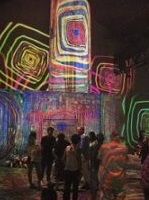Body & embodiment in society
Syllabus by Anne Marie Champagne
While home sick and waiting for delayed COVID PCR test results, I finished designing, from scratch, the first draft of my syllabus for “Body and Embodiment in Society,” which I envision teaching as an upper-level college seminar. I go heavy on the reading (80-120 pages a week), but I compensate by going light on the writing. Feel free to have a look at the syllabus available here, but please be mindful not to copy or circulate it, and please do not borrow from any portion of it without providing proper attribution. I plan on eventually creating a similar course with literature focused more narrowly on Body and Embodiment in the Arts, a course geared towards artists, designers, and architects. I may also transform sections of my current syllabus into thematic workshops. I’ll keep you posted.
COURSE DESCRIPTION – This course provides an in-depth introduction to historical and contemporary understandings of the body and embodiment in society. Drawing on a broad range of interdisciplinary literature and theoretical traditions from the social sciences, human geography, cultural studies, media studies, philosophy and the humanities, this course explores the symbolic and material horizons along and out of which bodies fashion—and are fashioned by—worlds, myth, societies, and selves. Part I of the course considers the cosmological and organizing principles of the body in myth and enlightenment thinking, bringing each into conversation with understandings of the body in early sociology. Part II introduces the phenomenological, post-structural, postmodern, and cultural theoretical perspectives vital to the “bodily turn” and thematization of the body in social thought that occurred in the late 20th century. Part III examines body and embodiment in relation to issues of identity, place, and the boundaries of the embodied self. Topics from this section include sex, gender, race, and class; health, medicine, ageing and the life course; and posthumanism. Part IV attends to the public-facing social body, exploring the body at worship and play, the body that witnesses and protests, and the aesthetic politics embodied in art and the built environment.
